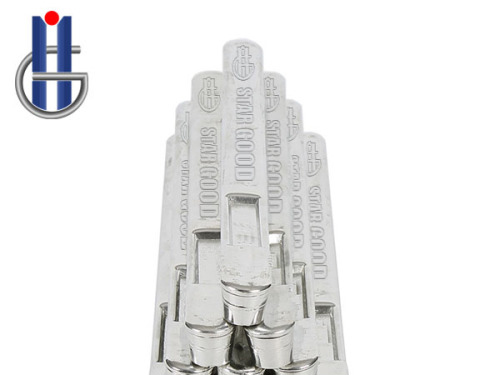Lead-tin bars, also known as solder bars, are essential components in various manufacturing processes, particularly in electronics and plumbing. These alloy bars, composed of lead and tin, exhibit unique properties that make them indispensable in joining metals and ensuring the reliability of electrical connections. In this article, we delve into the applications, properties, and considerations surrounding
lead-tin bars, shedding light on their importance in modern industry.
Applications:
Electronics Assembly: Lead-tin bars are widely used in the electronics industry for soldering electronic components onto printed circuit boards (PCBs). Their low melting point and ability to form strong, durable bonds make them ideal for creating electrical connections in devices ranging from smartphones and laptops to automotive electronics.
Plumbing and HVAC Systems: In plumbing and HVAC (heating, ventilation, and air conditioning) systems, lead-tin bars are employed for soldering copper pipes and fittings. The soldered joints provide watertight seals, ensuring the integrity and longevity of plumbing installations in residential, commercial, and industrial settings.
Properties:
Low Melting Point: Lead-tin alloy typically has a lower melting point compared to pure metals like lead or tin, allowing it to melt and flow easily during the soldering process without damaging sensitive electronic components or overheating plumbing materials.
Good Wetting Ability: Lead-tin solder exhibits excellent wetting properties, meaning it can spread evenly and form strong adhesion to the surfaces being soldered, promoting reliable electrical and mechanical connections.
Ductility: The lead-tin alloy is ductile, meaning it can be easily deformed without fracturing. This property is beneficial in soldering applications, as it allows the solder to conform to irregular shapes and provide robust joints.
Considerations:
Environmental Concerns: Lead, a component of lead-tin alloy, is known to pose environmental and health risks. As a result, there is growing awareness and regulation surrounding the use of lead-based solder in certain applications, particularly in electronics manufacturing.
Alternatives and Regulations: In response to environmental concerns, manufacturers are developing lead-free solder alloys as alternatives to traditional lead-tin solder. Regulatory bodies, such as the Restriction of Hazardous Substances (RoHS) directive, impose restrictions on the use of lead in certain consumer electronics to mitigate environmental impact.
In conclusion, lead-tin bars play a vital role in modern manufacturing processes, offering reliable solutions for joining metals and creating electrical connections. As industries evolve and environmental considerations become increasingly important, the development of lead-free alternatives and adherence to regulations will shape the future of soldering technologies, ensuring both performance and sustainability in industrial applications.



 Lead Bar for Sale: Uses, Specifications, and Buying Considerations
Lead Bar for Sale: Uses, Specifications, and Buying Considerations
 Exploring the Versatile World of Tin Wire Products: A Comprehensive Overview
Exploring the Versatile World of Tin Wire Products: A Comprehensive Overview
 Exploring the Uses and Advantages of Pure Tin Bars
Exploring the Uses and Advantages of Pure Tin Bars